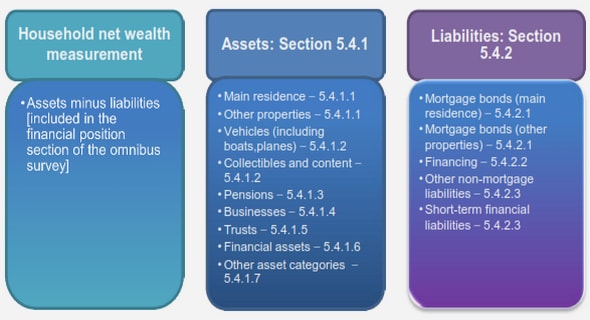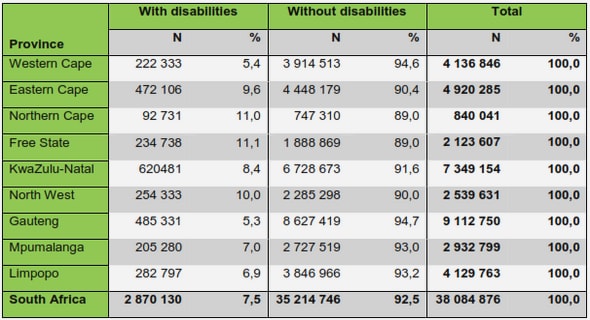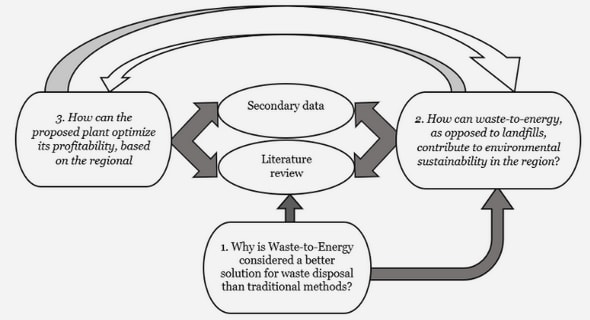Get Complete Project Material File(s) Now! »
Chapter 2: Theory and practice of the causes and effects of delays in coal mining projects
Introduction
This chapter explores the causes and effects of delays in projects based on a comprehensive review of literature available. Through the understanding of the previous research projects done the current understanding of the subject can be analyzed. The review will start with the international perspective and funneled down to an African perspective and finally a South African perspective of research done in the subject of causes and effects of delays in project management in relevant industries. These industries will be mining, construction and information management. This chapter will outline the various aspects of delays, how delays are caused and how they affect the project.
Defining the project management process
A project is defined (Gido and Clements, 1999: 2) as:
“….an endeavor to accomplish a specific objective through a unique set of interrelated tasks and the effective utilization of resources.” The project life cycle, as shown in Annexure B, has four basic phases which are; identify the need, develop a proposed solution, perform the project and terminate the project. The effort required in each phase increases to a peak and then tapers off as the project is completed (Gido and Clement, 1999). The project life cycle phases are more formalized in project management terms by Meredith and Mantel (2006) as:
a) Conception
b) Selection
c) Planning, scheduling, monitoring and control
d) Evaluation and termination
Project management in mining is broken down into five phases; scoping studies,prefeasibility, definitive feasibility studies, design and construction and operations (Noort and Adams, 2006). The mining project phases can be linked to both the life cycle phases by Gido and Clement (1999) as well as those by Meredith and Mantel (2006). It is feasible that mining organizations may use variations of the defined life cycle in their business.
Coal deposits in South Africa
Coal fields in South Africa are concentrated in the northern areas, which include the North Free State province, North Eastern Cape province, North Kwazulu Natal province, North Limpopo province and a major portion of the Mpumalanga province as shown in Annexure A. Most of the economically active mines are in the Mpumalanga province. According to Bian, Inyang, Daniels, Otto and Struthers (2010) 81.9% of all the coal extracted in the world occurred in USA, Russia, India, China, Australia and South Africa during 2006. In 2008 South Africa had an estimated 30 billion tonnes of proved, recoverable coal reserves, which is the tonnage that can be mined under the current economic conditions and technology (World energy council, 2010). From a study done by Jeffrey (2005) it is clear that the remaining reserves are of a poorer quality and will require a change in exploitation technology to benefit from this coal through use and sales.As the base for coal mining projects the mineral to be exploited needs to be examined. The South African Mining Mineral Resource Committee (SAMREC), have set out the minimum standards for the reporting of exploration results of any mineral. SAMREC modeled its code based on the code prepared by Joint Ore Reserves Committee of The Australasian Institute of Mining and Metallurgy, Australian Institute of Geoscientists and Minerals Council of Australia (JORC) (SAMREC, 2000).
(i) According to SAMREC (2004: 16):
“A „Mineral Resource‟ is a concentration [or occurrence] of material of economic interest in or on the Earth‟s crust in such form, quality and quantity that there are reasonable and realistic prospects for eventual economic extraction. The location, quantity, grade, continuity and other geological characteristics of a Mineral Resource are known, estimated from specific geological evidence and knowledge, or interpreted from a well constrained and portrayed geological model. Mineral Resources are subdivided, in order of increasing confidence.”
(ii) Furthermore, SAMREC (2004: 16) defines a mineral reserve as:
“……..the economically mineable material derived from a Measured and/or Indicated Mineral Resource. It is inclusive of diluting materials and allows for losses that may occur when the material is mined. Appropriate assessments, which may include feasibility studies, have been carried out, including consideration of, and modification by, realistically assumed mining, metallurgical, economic, marketing, legal, environmental, social and governmental factors. These assessments demonstrate at the time of reporting that extraction is reasonably justified. Mineral Reserves are subdivided in order of increasing confidence into Probable Mineral Reserves and Proved Mineral Reserves.”The determination of a mining resource and reserve is important as it is usually the first step in any Greenfield and even Brownfield mining project. The SAMREC code advises the use of a checklist, which is attached as an Annexure in that document, for the evaluation of a project (SAMREC, 2004). The reporting of the mineral deposit results are divided into three main elements with the listed criteria as sub points:
a) Reporting of exploration results
i. Mineral rights and land Ownership
ii. Exploration work done by other parties
iii. Geology
iv. Data compositing (aggregation) methods
v. Relationship between mineralization widths and intercept lengths
vi. Diagrams
vii. Balanced Reporting
viii. Other substantive exploration data
ix. Historical information of interest about the mine
x. Historic verification of the performance parameters
xi. Further work
b) Reporting of mineral resources
i. Database integrity
ii. Geological interpretation
iii. Estimation and modeling techniques
iv. Cut-off grades or parameters
v. Mining factors or assumptions
vi. Metallurgical factors or assumptions
vii. Tonnage factors (in situ bulk densities)
viii. Classification
ix. Audits or Reviews
x. Historical information of interest about the mine
xi. Historic verification of the performance parameters
xii. Others
c) Reporting of mineral reserves
i. Mineral Resource estimates for conversion to Mineral Reserves
ii. Plant and equipment
iii. Cut-off grades or parameters
iv. Mining factors or assumptions
v. Directors‟ forecast
vi. Volume and capacity estimates for processing
vii. Mass balance plan and description
viii. Metallurgical factors or assumptions
ix. Environmental descriptions of anticipated liabilities
x. Plant and equipment
xi. Cost, revenue factors and funding
xii. Historical information of interest about the mine
xiii. Historic verification of the performance parameters
xiv. Market assessment
xv. Other modifying factors
xvi. Comparative values
xvii. Classification
xviii. Audits or reviews
The elements in C should make up the basic information required for a mine project as part of the feasibility requirements.
Contents
Abstract
Acknowledgements
List of Figures
List of Tables
Abbreviations
Chapter 1: Orientation
1.1 Introduction
1.2 Definitions
1.2.1 Project management
1.2.2 Project delays
1.2.3 Greenfield and Brownfield mining projects
1.3 Problem Statement
1.4 Objectives of research
1.5 Hypotheses
1.6 Delimitations of the study
1.7 Chapters Outline
Chapter 2: Theory and practice of the causes and effects of delays in coal mining projects
2.1 Introduction
2.2 Defining the project management process
2.3 Coal deposits in South Africa
2.4 Coal mining in South Africa
2.5 Defining delays and their effects
2.6 A global perspective to project management causes and effects of delays
2.7 African research on project management causes and effects of delays
2.8 South African research on project management causes and effects of delays
2.9 Coal mining projects
2.10 Summary
Chapter 3: Research Methodology
3.1 Introduction
3.2 Research design
3.2.1 Research type
3.2.2 Instrumentation
3.3 Sampling process
3.4 Measurement scales
3.5 Data collection
3.6 Ethical considerations
3.7 Perceived limitations of the research
3.8 Summary
Chapter 4: Research Results
4.1 Introduction
4.2 Sample
4.3 Respondents
4.4 Biographic data
4.4.1 Gender of respondents
4.4.2 Age of respondents
4.4.3 Organization of respondents
4.4.4 Project management role of respondents
4.4.5 Project management experience of respondents
4.5 General questions related to the literature on delays and their effects
4.5.1 Experiencing delays
4.5.2 Delays in the project management process
4.5.3 Measuring delays
4.5.4 Measuring delay classification
4.5.5 Delays from the perspective of Owners, Consultants and Contractors
4.5.6 The effects of delays experienced
4.6 Identifying types of delays related to the literature on delays and their effects
4.6.1 Delays due to labor
4.6.2 Delays due to materials
4.6.3 Delays due to equipment
4.6.4 Delays due to contractors
4.6.5 Delays due to the owners
4.6.6 Delays due to the consultants
4.6.7 Delays due to exogenous factors (weather)
4.6.8 Delays due to government regulations
4.6.9 Factors related to coal mining projects that are possible delays
4.6.10 Delays due to specific mining issues
4.7 Conclusion
Chapter 5: Synthesis and Analysis of Results
5.1 Introduction
5.1.1 Analysis description
5.1.2 Hypothesis testing
5.1.2.1 Significance level
5.2 There are no delays in coal mining projects in South Africa (Ho1)
5.2.1 Hypothesis testing of Ho1
5.3 The delays experienced in projects in the coal mining industry in South Africa are not measured effectively (Ho2)
5.3.1 Hypothesis testing of Ho2
5.4 The effects of delays in projects in the coal mining industry in South Africa are not measured effectively (Ho3)
5.4.1 Hypothesis testing of Ho3
5.5 The majority of delays are not experienced during the planning phase of the project process (Ho4)
5.5.1 Hypothesis testing of Ho4
5.6 The majority of delays are not experienced during the execution phase of the project process (Ho5)
5.6.1 Hypothesis testing of Ho5
5.7 Are consultants and contractors used in the coal mining industry in South Africa?
5.8 What are the delays experienced in the coal mining industry in South Africa?
5.9 What are the effects of delays experienced in the coal mining industry in South Africa?
5.10 Summary of analysis and hypothesis testing
5.11 Conclusion
Chapter 6: Conclusion and Recommendations
6.1 Introduction
6.2 Conclusions
6.2.1 Project management personnel in the South African coal mining industry
6.2.2 Delay occurrence in the South African coal mining industry
6.2.3 Measuring delays in the South African coal mining industry
6.2.4 Delays during the project life cycle
6.2.5 The possible delays expected in coal mining projects in South Africa
6.2.6 The possible effects of delays expected in coal mining projects in South Africa
6.3 Recommendations
6.3.1 Measuring of delays
6.3.2 The occurrence of delays
6.3.3 The effects of delays
6.4 Recommendations for future research
6.4.1 Delays during the project life cycle
6.4.2 Knowledge management in coal mining projects
6.4.3 Mitigation methods for reducing delays in projects in coal mining projects
References
Annexures


